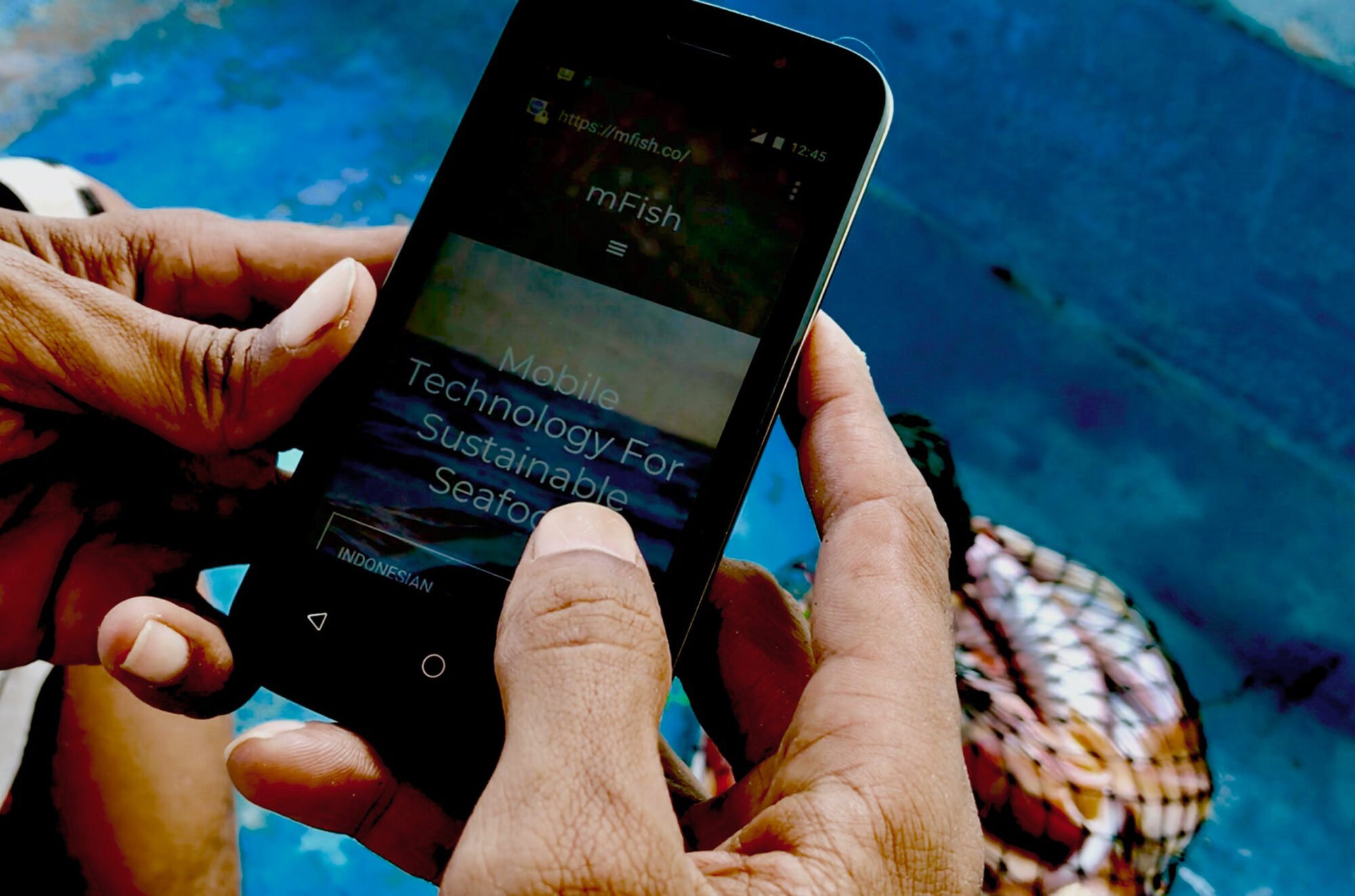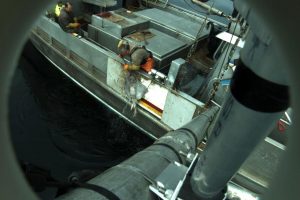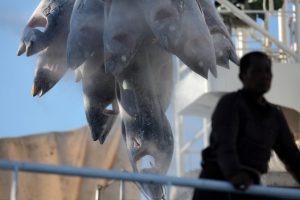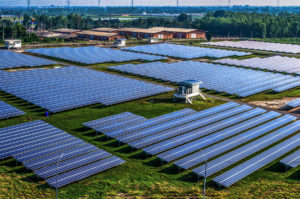A tin of tuna is an unremarkable thing. But it disguises an incredible journey the fish within has taken to reach you. To fully trace that journey, you’d need to find answers to dozens of questions. Who caught the fish? Was the vessel permitted to catch where it did? What were the working conditions like on board? Was the tuna illegally transferred to another vessel at sea? How many countries did it pass through before reaching your plate? Did it fall into the hands of a processor who mislabelled it along the way? Is it even tuna, after all?
For the majority of the seafood we eat, answers are elusive. The remote nature of fishing and increasingly convoluted supply chains – spanning multiple countries, and involving hundreds of transactions and dozens of companies – makes it one of the most opaque industries in the world. Roughly 30% of seafood is unreported, and may also be unregulated, increasing the likelihood that it was illegally caught. Illegally caught seafood frequently involves labour abuses on fishing boats. Meanwhile, research shows that one in three fish may be mislabelled, either intentionally or not.
If you purchase seafood “chances are whatever you get isn’t very traceable”, says Maggie Lee, the Asia-Pacific regional lead for global seafood traceability with WWF. But over the last 10 years, in the wake of large investigative reports that have revealed the scale of seafood mislabelling, there’s been growing pressure for the industry to adopt “full-chain traceability”. This would mean each piece of seafood could be tracked along every step, from ocean or farm right through to the consumer’s plate. A new wave of technological innovations is rising to this challenge and gradually illuminating the murky supply chain. From surveillance on the high seas to blockchain, traceability tech is being backed by influential NGOs and adopted by large seafood companies.
As these tools enter the fold, what have they achieved so far? And where are they heading next?
The first mile
Traceability isn’t a new concept in the seafood industry. It has historically been achieved through a mix of paper-based and digital systems designed to ensure produce meets food safety standards. But in recent years, growing awareness of the industry’s human rights abuses and environmental impacts have raised the stakes, expanding the scope of what we need to know about seafood to call it “sustainable” – namely who caught it, how, where from and whether it was legal.
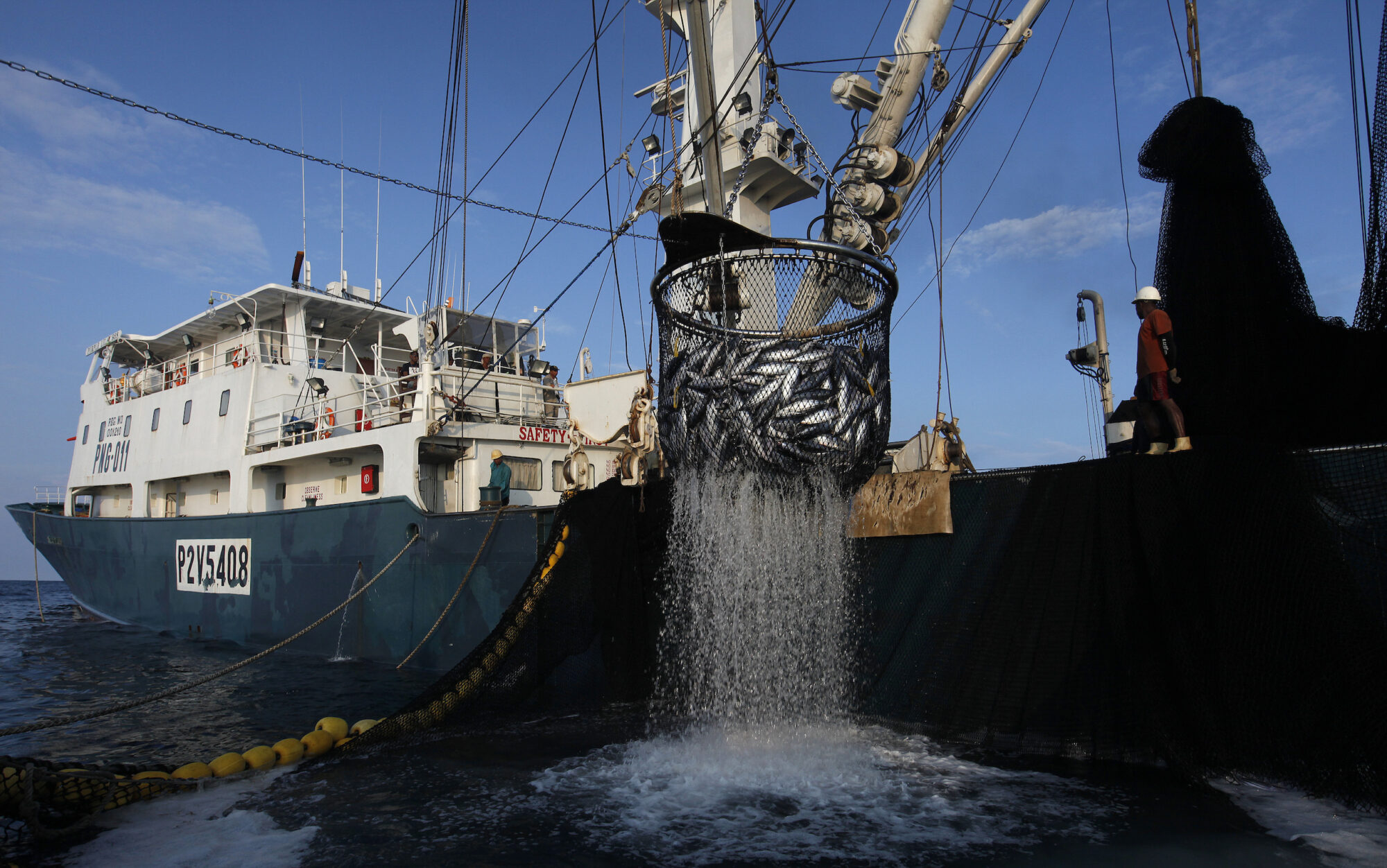
We also need better ways to glean that information. “The increasing demand for full-chain transparency [has] shifted the rationale from what needs to be done to how it should be done,” says Nianjun Shen, a fisheries analyst at the UN’s Food and Agriculture Organisation (FAO). Many see the answer in digital tools that can gather vast amounts of data, at multiple points along the supply chain.
The first big step in this direction came about 10 to 15 years ago with the widespread switch from largely paper-based catch records to electronic catch documentation schemes. These are now supplemented by other digital tools, many focused on the so-called “first mile” when, and shortly after, fish are captured at sea. That’s where the critical traceability data can be gathered – the who, what, where and how of seafood. But it’s also typically the most difficult to collect.
“So much of traceability has been focused on what happens once the fish reaches port. But all the opportunities exist for illegal fishing, and for fish to be laundered, [on the open ocean],” explains Duncan Copeland, co-founder of Trygg Mat Tracking (TMT), a non-profit based in Norway that provides fisheries intelligence. Collaborating with the non-profit Global Fishing Watch, which maps the real-time location of commercial fishing fleets, TMT works to combine multiple data streams on vessels – location, ownership, past violations – to build digital interfaces that countries can use to track illegal fishing activities off their coasts, and to help enforce the law. The aim is to “bring all those disparate data sources together to try and provide the best possible overview of global industrial fishing fleets”, Copeland says, “because that information doesn’t exist anywhere else”.
Global Fishing Watch’s technology isn’t groundbreaking. But it has completely changed the norm.
In other words, technology is making it possible to interrogate the crucial first link of the supply chain more closely than ever before. “Technology has changed what we expect from transparency and traceability,” says Annie Brett, a professor of environmental law at the University of Florida who studies emerging technologies in managing the oceans. “For example, Global Fishing Watch’s technology isn’t groundbreaking. But it has completely changed the norm: now you can actually see where fishing boats are in the world.”
Meanwhile, electronic monitoring (EM) is bringing surveillance directly onto fishing boats. EM cameras can replace human fisheries observers, to keep a constant watch on a vessel’s activities, recording potential illegal fishing, transshipment activities or labour abuses. Cameras can both act as a deterrent and provide an accurate record of fishing activities. EM is currently installed on about 1,000 vessels worldwide, and it’s gaining traction with big companies. Thai Union, one of the largest seafood processors in the world, plans to install all its tuna suppliers with the technology by 2025, says Darian McBain, the company’s former director of corporate affairs and sustainability. “After that time, we won’t source from a vessel if it doesn’t have EM.”
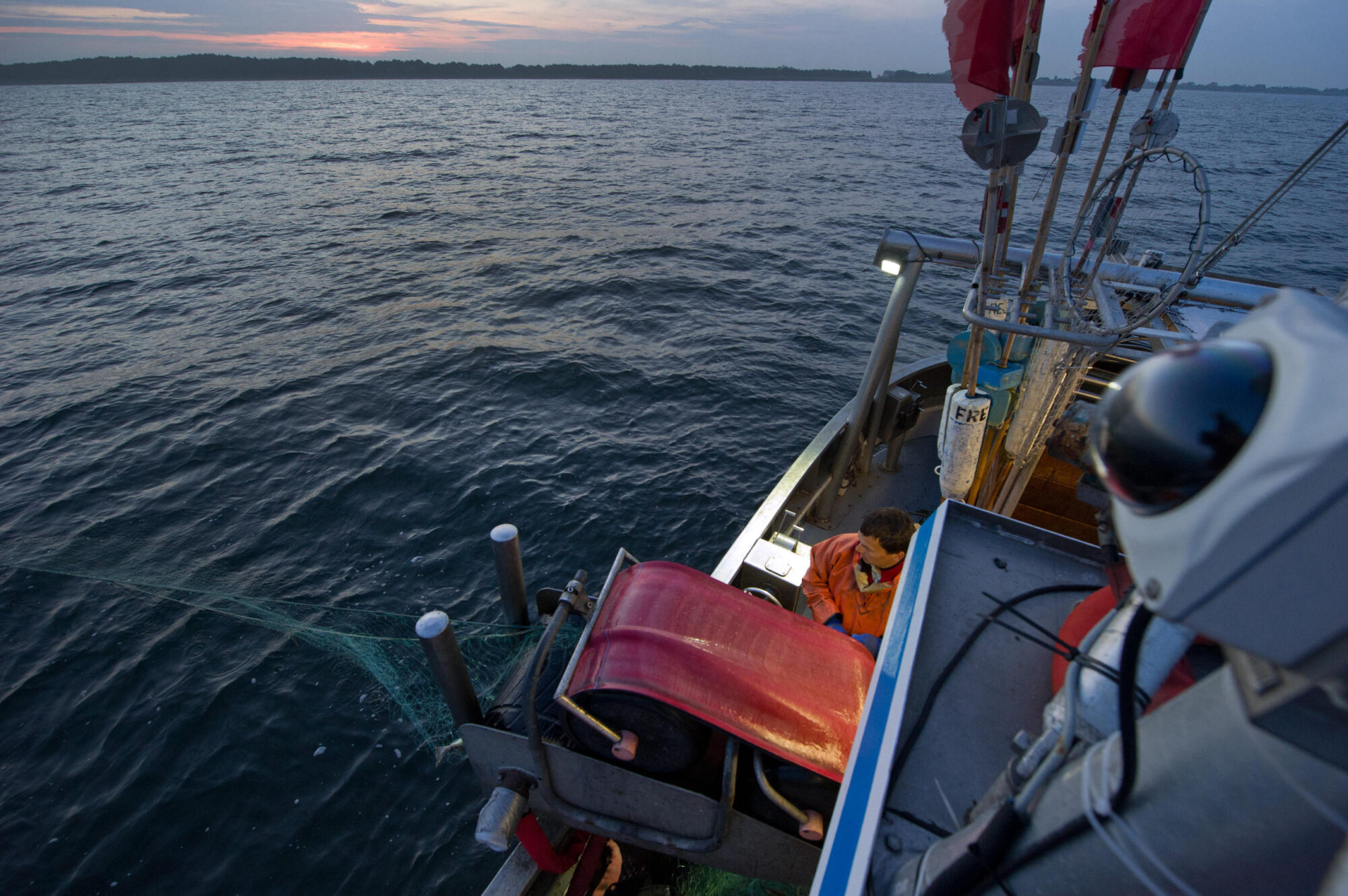
Thai Union
Thai Union owns major seafood brands like John West and is the biggest importer of shrimp into the United States. In 2015, some shrimp vessels supplying it were implicated in slavery allegations, and the company realised things needed to change rapidly. “Our customers started to ask us: ‘Are these accusations true?’ And we had to have more information so that we could answer those questions truthfully,” says Darian McBain.
Thai Union began asking all their vessels to supply basic traceability information. If they refused, they were dropped. Meanwhile, in partnership with the Nature Conservancy, the company is trialling EM on the tuna fleet that supplies it. They are also working with Stanford University to develop machine learning algorithms that can swiftly process the camera footage to help build up a detailed history of fishing activities. By 2025, the company plans to install all its tuna suppliers with this technology, says McBain.
Most fishing fleets aren’t supported by a company that’s driving them towards sustainability, however. To import to countries that require basic traceability information, such as the United States, fishers typically have to gather that data at their own expense. “It’s an absolutely terrible business model, because many people cannot afford to pay for [traceability technologies], and why should they?” says Alastair Smart, co-founder of Eachmile Technologies. The company is developing a free tool called Fishcoin that’s trying to weave reward into traceability systems. Built on the digital ledger known as blockchain, Fishcoin will enable buyers to purchase directly from fishers based in countries such as Vietnam and Indonesia. The fishers can charge a premium to provide traceability data about their catch, which is paid in tokens through blockchain that can be exchanged for mobile phone credits. “Developed nation actors reward the developing nation actors to share data, and this helps demonstrate that it’s legal at least, and reported and regulated in some way,” says Alistair Douglas, also a co-founder of Eachmile Technologies. He believes this reward-based approach could help build up a cache of traceability data from fisheries in the critical first mile.
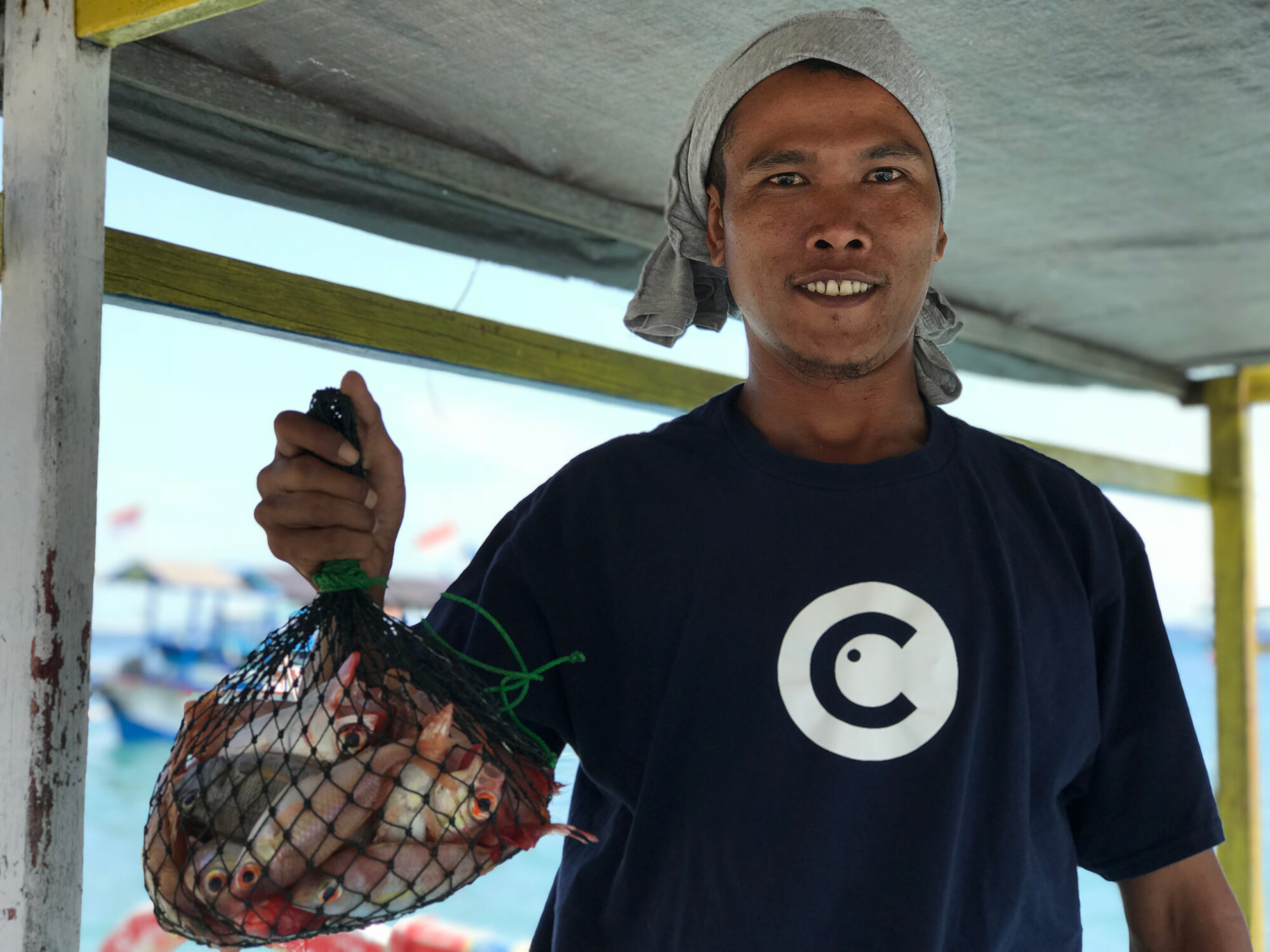
The murky middle
Blockchain tech could also help illuminate the complex midsection of the supply chain. “For seafood, the middle is messy, and dark. There can be eight or nine steps between just the producer – whether fisher or fish farmer – and retail,” says Marah Hardt, director of discovery at Future of Fish, a non-profit bringing innovation to small-scale fisheries. Transporters, seafood processors and packaging companies might gather traceability information from whoever sells to them, if it’s available. But that information often gets siloed at each step instead of moving forward, creating what WWF’s Maggie Lee calls “a lost chain of information custody”. Recovering that sequence is crucial for full-chain traceability.
However, if all actors along the supply chain of, say, Alaskan salmon were privy to one blockchain, they could use it to pass on information all the way to the consumer about how and by whom the fish were caught. Blockchains generate tamper-proof records of transactions, making it difficult to falsify data and guarding against problems like mislabelling. McBain believes that if they eventually covered whole supply chains, one day tools like this may even replace sustainability certifications (such as the Marine Stewardship Council’s). “Certification tends to be more of a one-off snapshot – a ‘do you comply at this particular point in time?’ Whereas continuous data capture could replace an audit with this real-time data flow.”
Blockchain
Many companies are now investing in blockchain technology to track seafood along portions of the supply chain. Through its Food Trust blockchain traceability platform, IT giant IBM has partnered with several seafood companies in the United States and Norway, to trace everything from Atlantic scallops to Norwegian salmon. Fijian tech start-up TraSeable Solutions has been trialling blockchain technology on Pacific fisheries, and has so far tracked tens of thousands of fish through the supply chain.
Fishcoin, meanwhile, is working with Thai Union to bring blockchain to the company’s farmed Thai shrimp supply chains. But blockchain shouldn’t be taken as a silver bullet, according to a 2020 report by the FAO. That assessment found the technology holds huge promise, but uptake is still relatively slow and mainly led by NGO and private-sector initiatives. So far, that has confined its use to specific sections of the value chain, and so its capacity to work across complex, multi-actor, whole supply chains has yet to be tested.
Meanwhile, other tools are tackling transparency challenges that can creep in at various points along the supply chain. DNA-tracing to identify species mislabelling is a good example. “DNA is irrefutable,” says Dane Chauvel, co-founder of the Canadian supplier Organic Ocean Seafood, which imports premium seafood from countries including Japan, Mexico and Peru. Organic Ocean was an early adopter of DNA-tracing in 2008. Today, Chauvel works with researchers who independently DNA-check his stock. If something is ever mislabelled, he can quickly question his suppliers, most of whom he buys from directly to simplify his supply chains. Meanwhile, the results of the spot-tests are shared transparently online. DNA tracing is now evolving to become more rapid and portable: “There’s great interest in being able to do tests randomly, anywhere and everywhere,” says Chauvel.
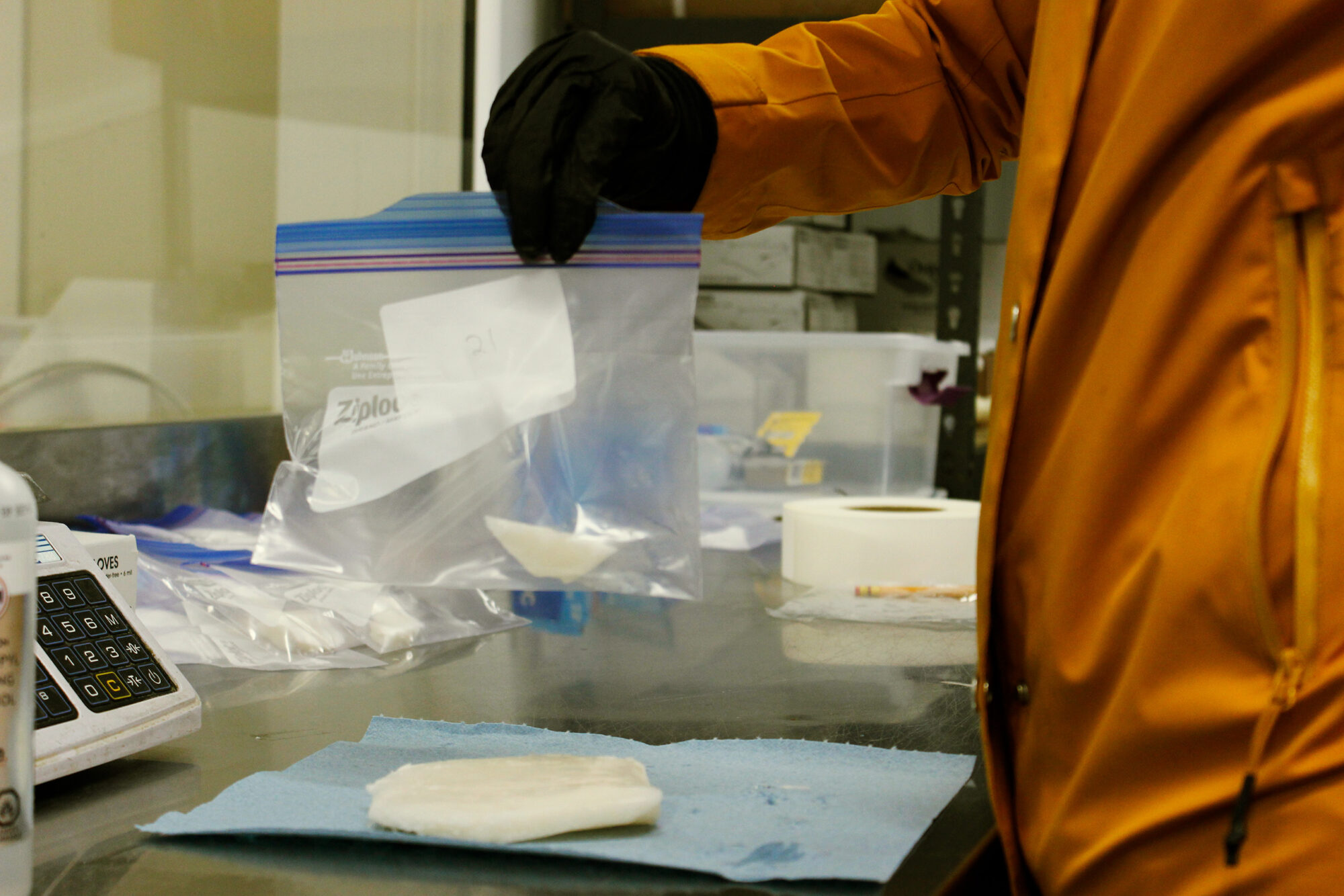
A silver bullet?
That’s just a sampling of the many technologies entering seafood supply chains. Continued innovation is essential for tackling the multifaceted challenge of traceability, believes Alastair Smart. “We’ve got to use technology to accelerate a positive change.” Traceability tech is certainly attracting plenty of investment, says Hardt. “A lot of the financial resources and expertise have been focused on the technology, because it’s sexy, right? And it’s needed because seafood is very diverse, so you do need different systems. That variety is important, to meet users where they are.”
But this proliferation of tech also has an important limitation: no matter how much data it gathers for the cause of traceability, “it doesn’t tell you what to do with it; it doesn’t force you to apply it,” Hardt says. Full-chain traceability will require something more difficult to realise than new technologies alone: a culture shift in how the industry uses – and crucially shares – this information.
In part two, we look more closely at how the data collected by these new technologies could improve the fishing industry.
A Chinese translation of this article will be available soon.
